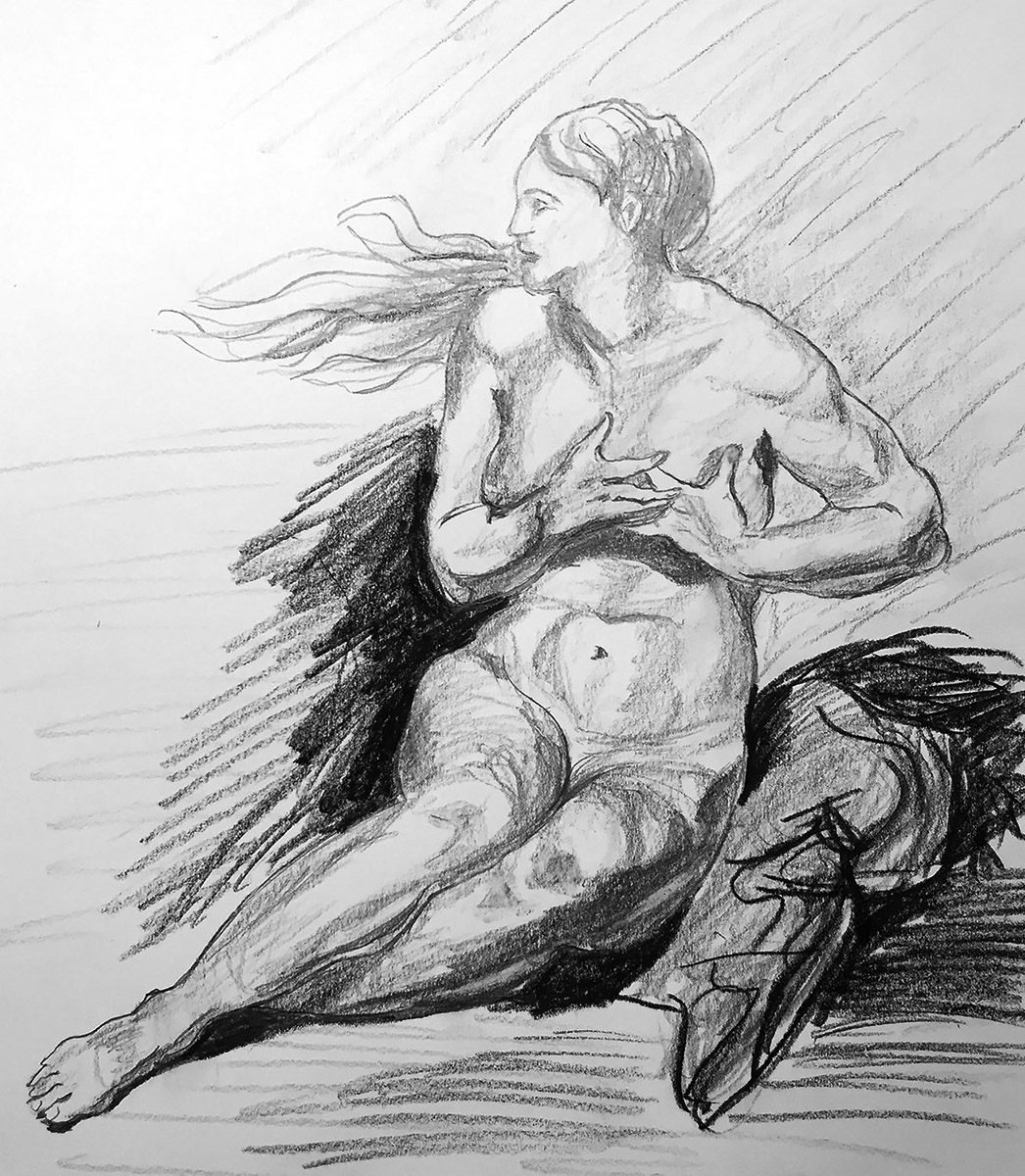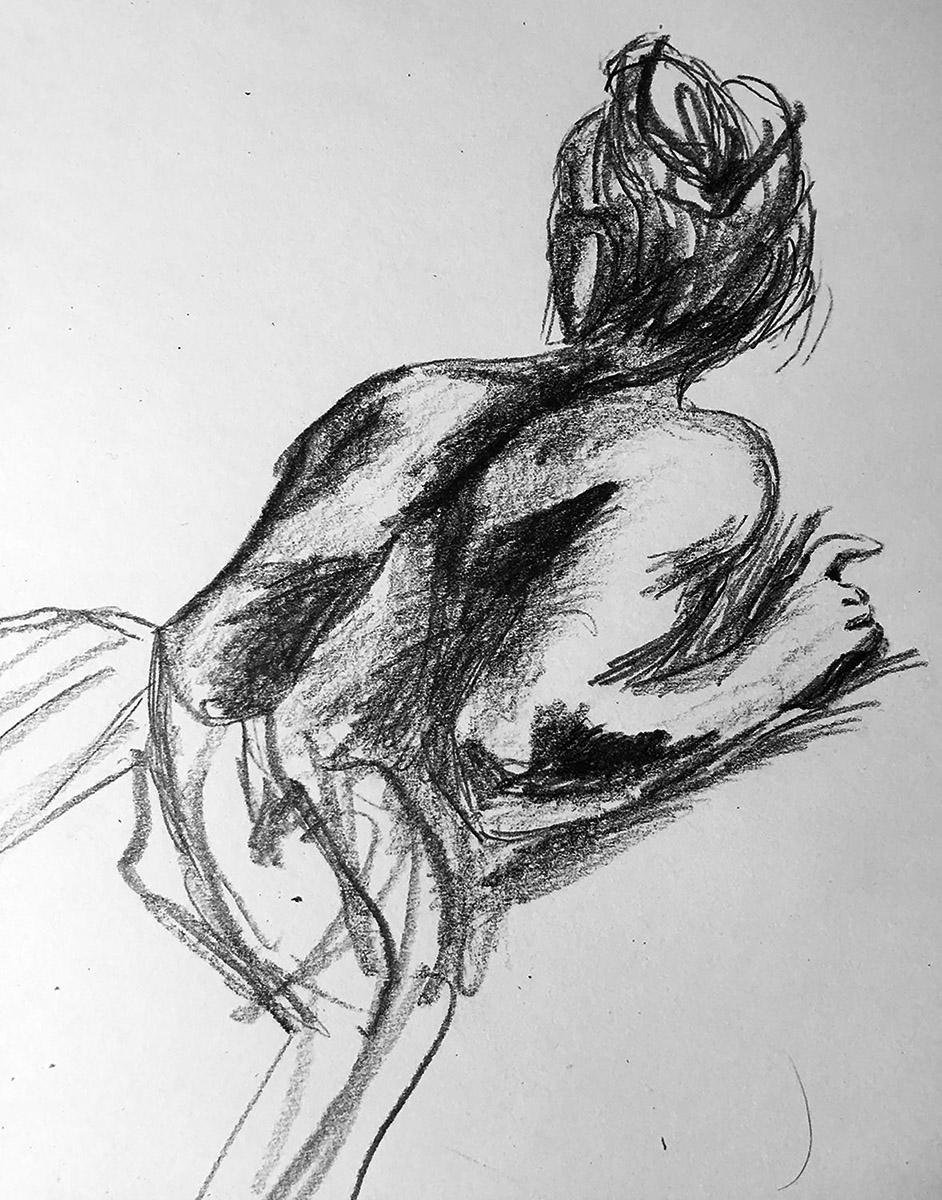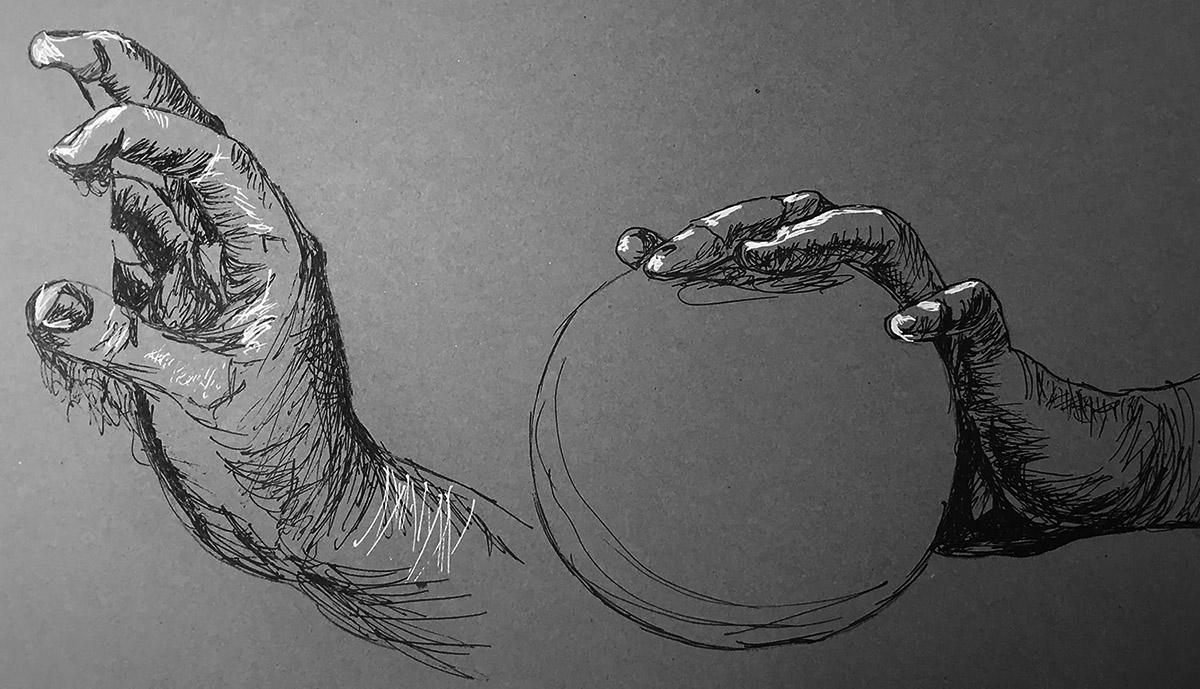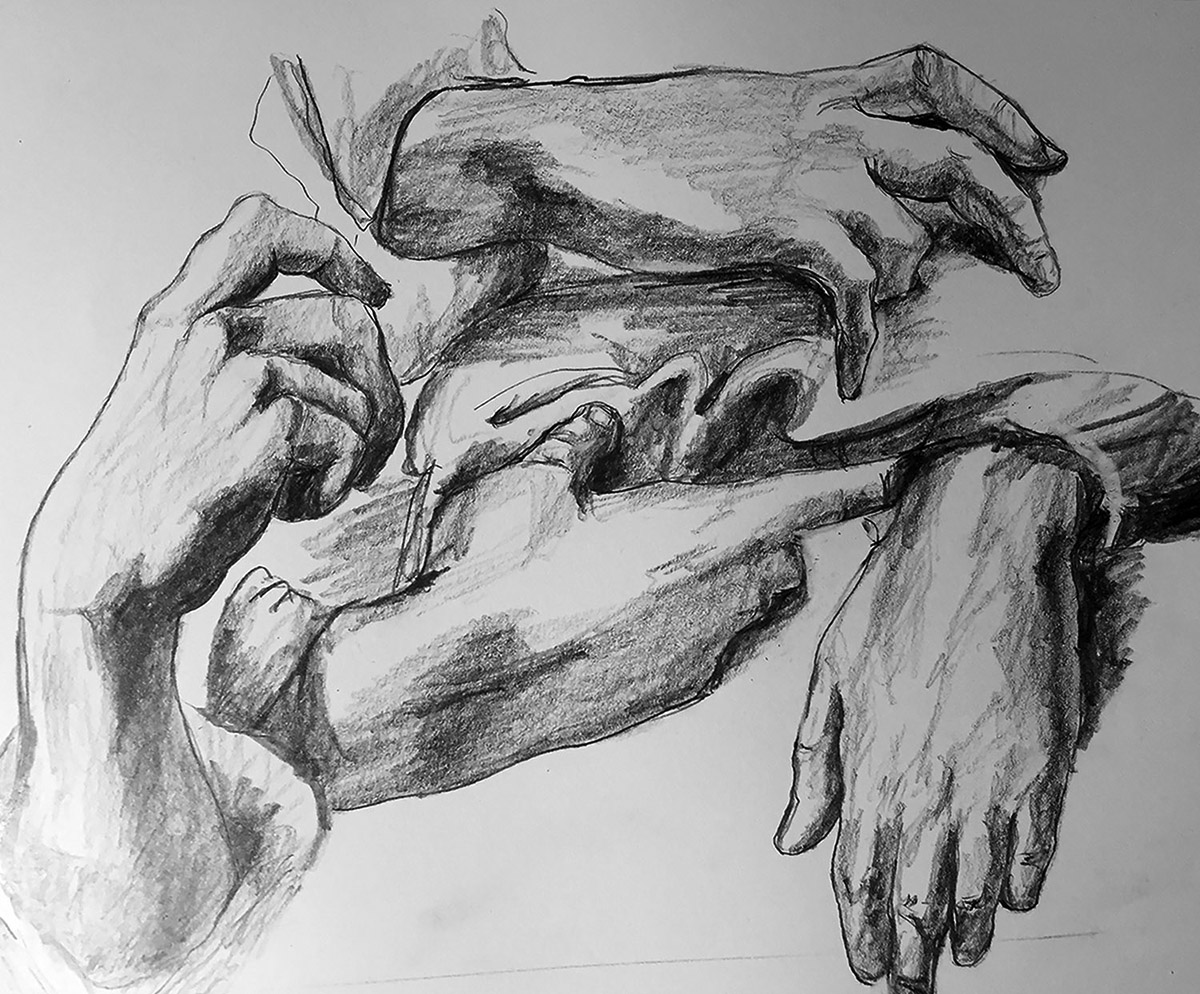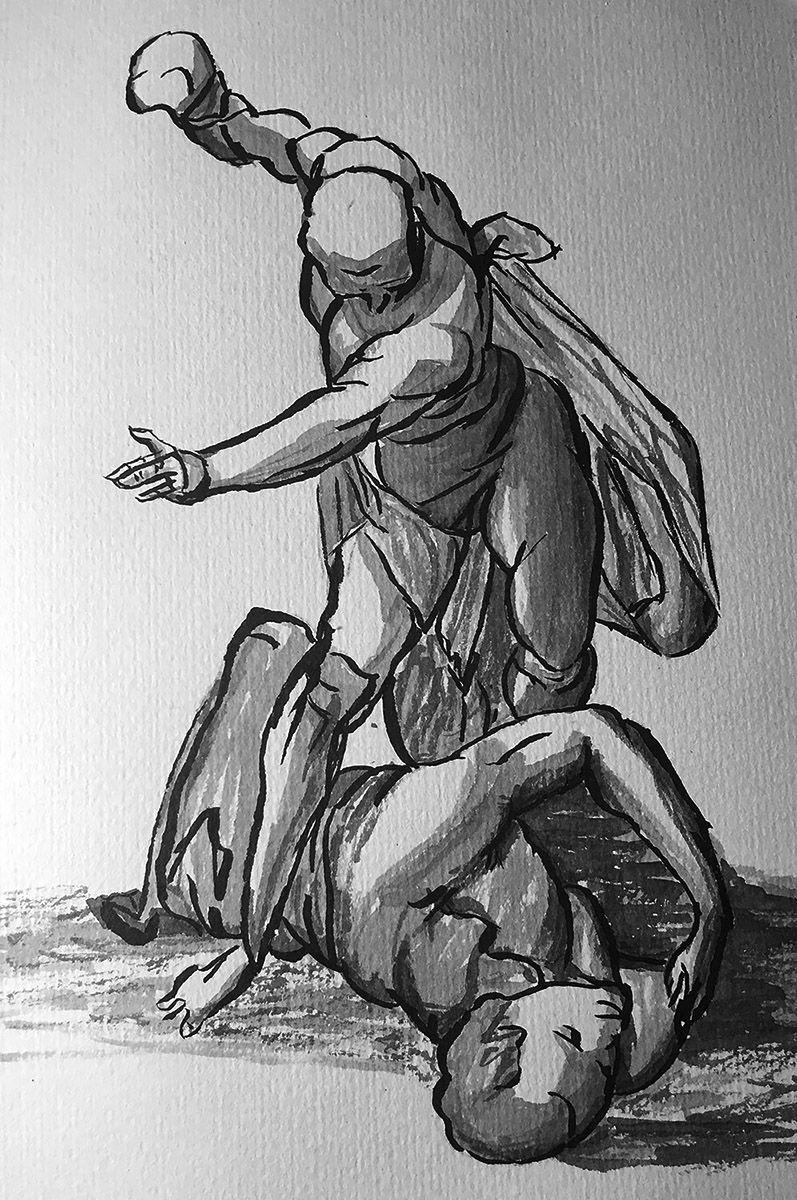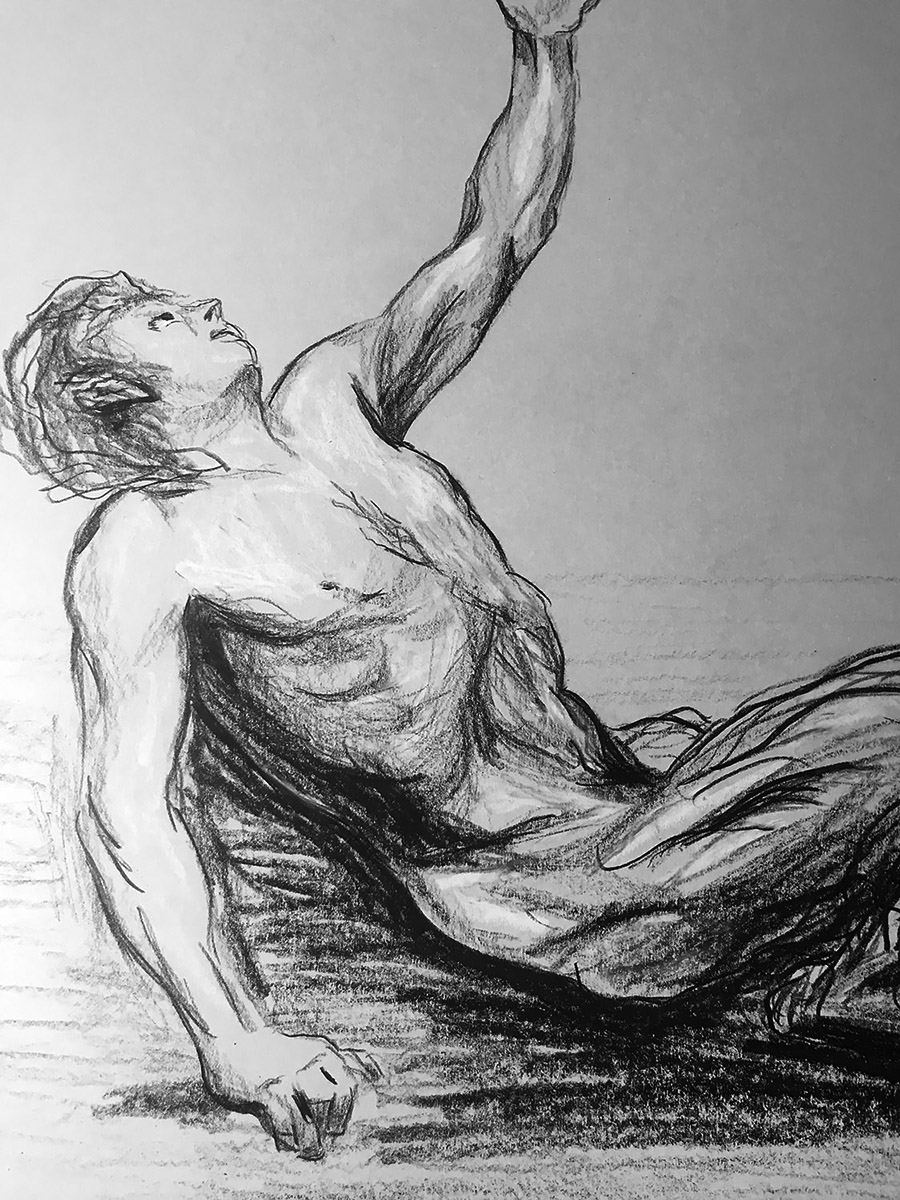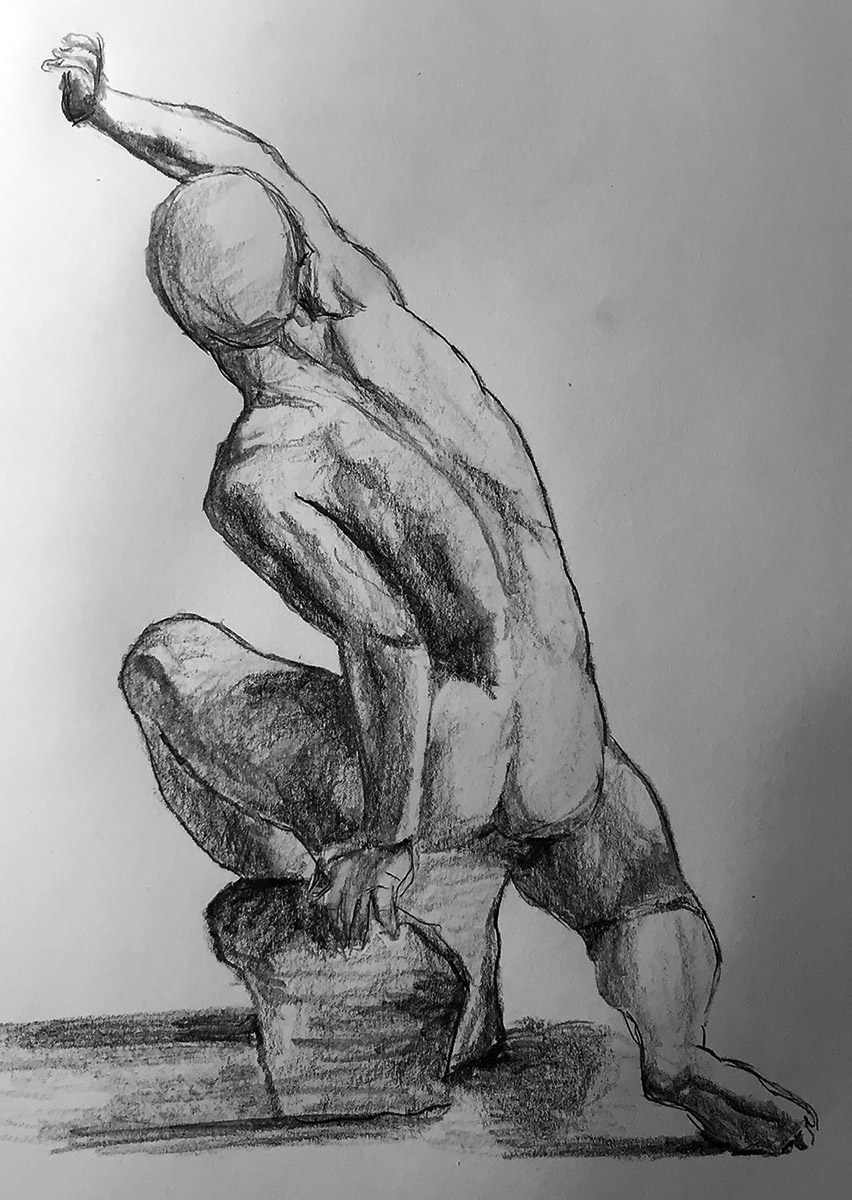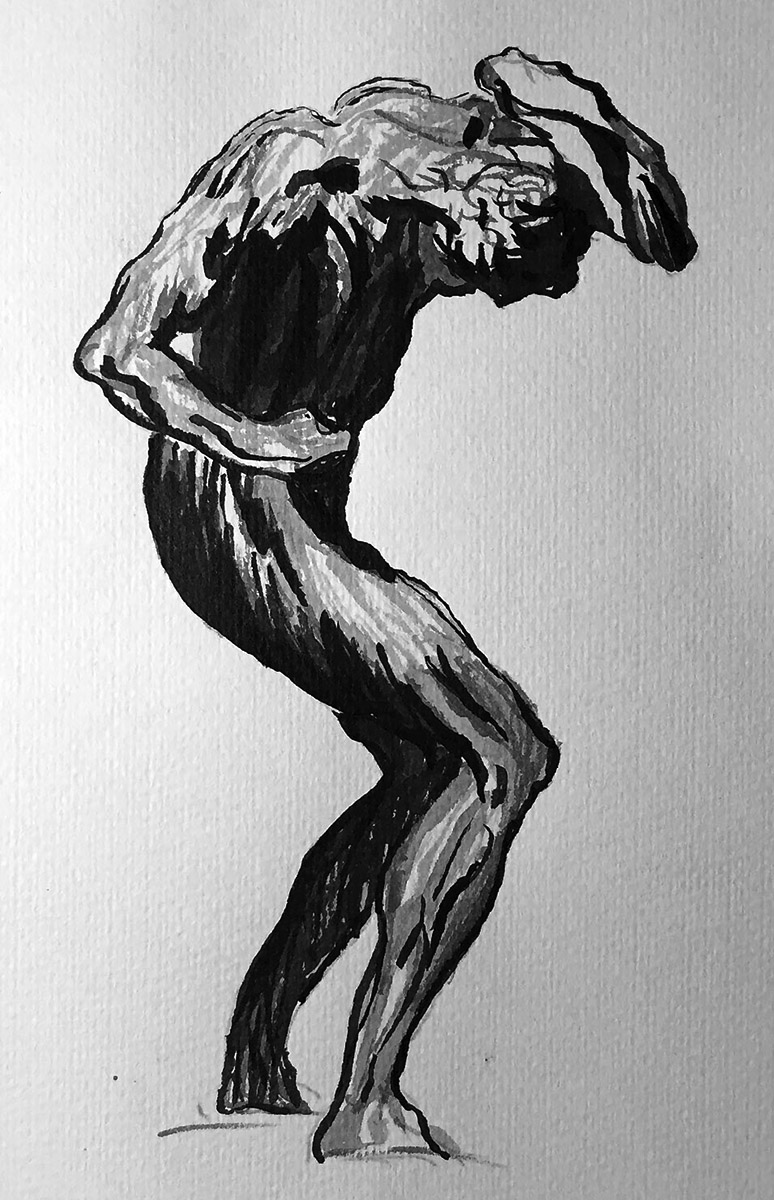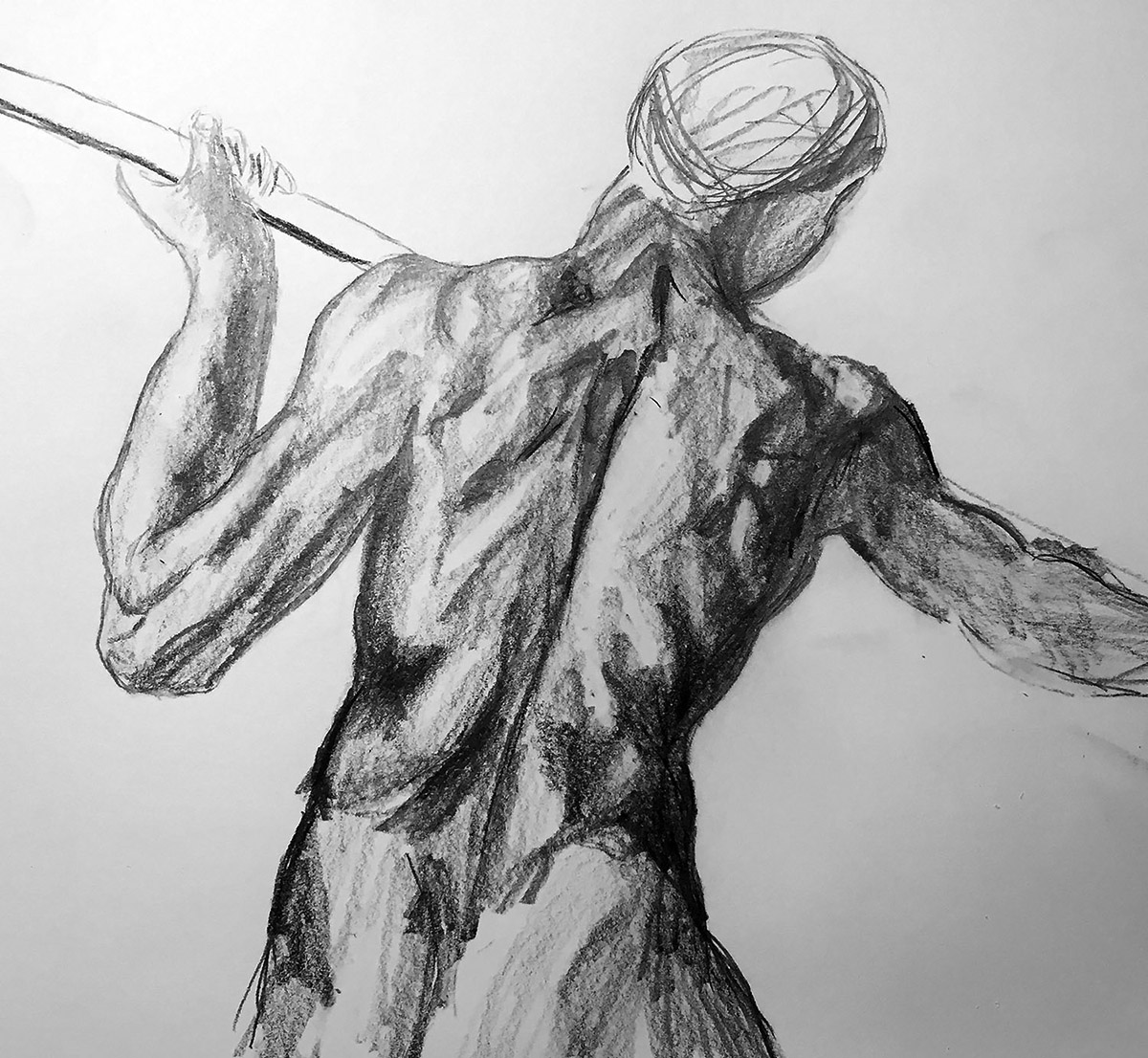
This next post is a pencil drawing copied from a work done in black chalk highlighted with white chalk by Michelangelo Buonarroti in 1504. It is in the collection of the Albertina Museum in Vienna, Austria. However, it is currently on loan to the Metropolitan Museum in New York. The Albertina Museum describes it as “Male Nude Seen from the Back with a Flag Staff,” in the Metropolitan, it is described as “Nude Male Figure in Half-Length Seen from the Rear.” Did the New Yorkers not see the ‘flag staff’ in the guy’s hand, or did they not think it was important? Either way, details of that nature are beyond the scope of this blog. One thing is certain: the drawing was completed in 1504 and is a study for a fresco depicting the “Battle of Cascina.” Let’s consult Michelangelo.org to learn more.
The Battle of Cascina was a fresco painting planned for a wall in Palazzo Vecchio in Florence, Italy, but was never finished. Leonardo da Vinci was also employed to paint a scene from the Battle of Anghiari to decorate the wall across from Michelangelo’s painting. The two battles were important Florentine victories from the Middle Ages. The troops of Florence and Pisa engaged in combat at Cascina on July 28, 1364. A thousand Pisans were massacred, and 200 more were taken as prisoners.
Michelangelo portrayed a scene from the opening stages of the conflict when the Florentine army was initially caught off guard by the Pisan attack. Michelangelo depicted the Florentine soldiers taking a naked bath in the Arno River before the attack from the Pisans. The painting was to depict the soldiers as they came out of the river and were putting on their armor. Numerous soldiers glance or make gestures toward the Pisan position to the left. While others act enthusiastically, one soldier appears to have been struck and fallen back into the river.
Before being called by Pope Julius II to Rome, where he labored on the Pope’s tomb, Michelangelo only created the preliminary drawings. After finishing this project, he returned to Florence to finish the composition’s full-size cartoon (drawing). The drawing was eventually divided into several pieces and dispersed across Italy

